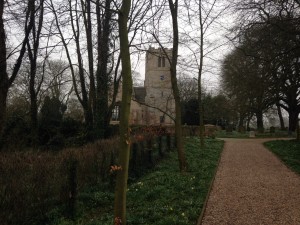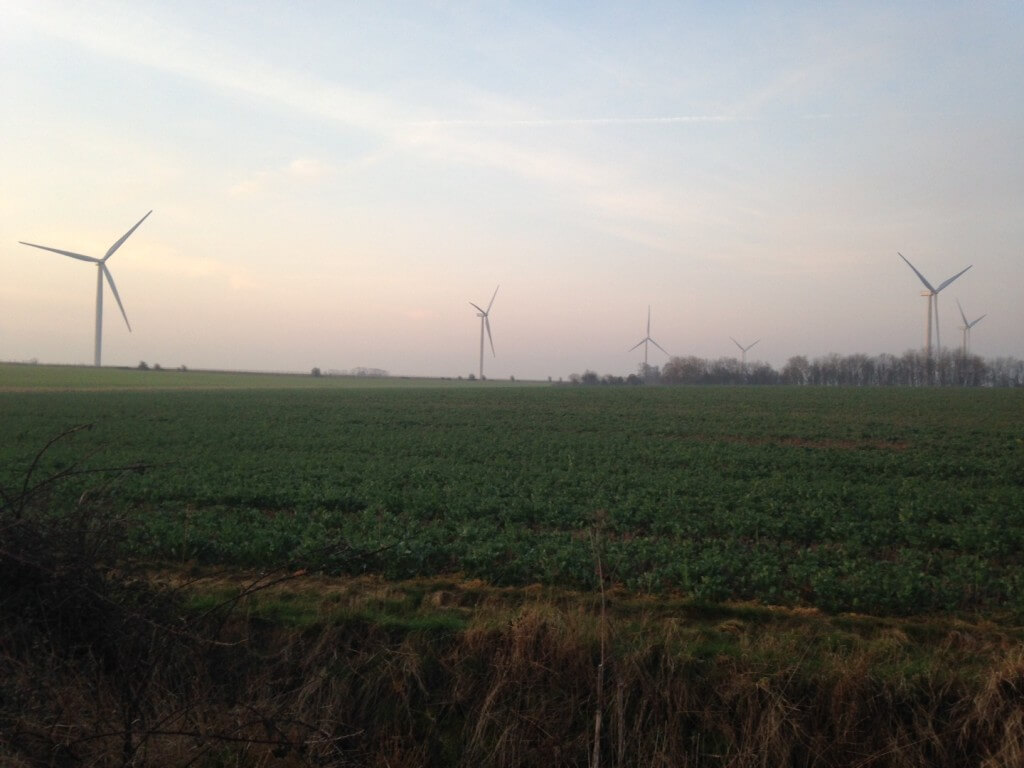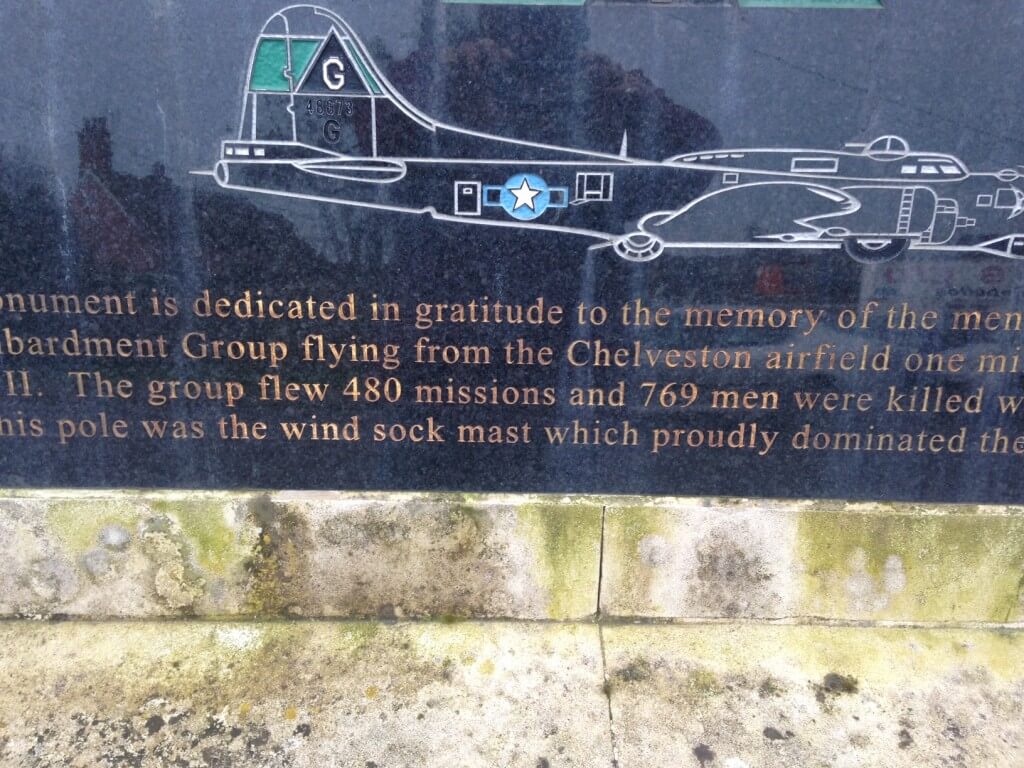The whole purpose of the Monday of Cheltenham week is to free one’s mind from real life and to concentrate on the total irrelevance of horses running around in circles (in the case of Cheltenham, anti-clockwise circles). So with this in mind I went for a walk early on Monday morning to relax and let all cares slip away (I haven’t got many so it shouldn’t take long).
I visited a local airfield which tends to attract the occasional migrating Wheatear in spring, and I just wondered whether there might be an early Wheatear or Ring Ousel around. It was probably at least a couple of weeks too early so it was a bit of a long-shot – but this is Cheltenham week.
Since I last visited, nine tall wind turbines have been erected, and although it was breezeless at 2m above ground they were all turning enthusiastically as I walked down the old runway. There were no early spring migrants but there were birds. Yellowhammers sang at me as I parked my car (which gets its annual wash on the Monday of Cheltenham week) and several hundred Fieldfares fed in the grassland beside the old runway. Skylarks sang in large numbers and about four hundred Starlings fed in a tight flock on some distant grass.
I was walking straight down the old runway – and it stretched away from me for well over a mile. There were ugly modern metal fences to keep me to the right of way, I didn’t want to stray anyway, and a network of wooden fences dividing the grass fields into rectangles. One field held a flock of sheep. Every field held singing Meadow Pipits – a rarity for this part of the world.
This flat, open, treeless expanse of grassland, with its network of fences, and nine tall modern wind turbines also had the remains of old buildings from the Second World War and Nissen huts, as well as a modern hanger-type structure and a few ugly portakabins. There was also, I discovered, a field of solar panels further up my walk – they weren’t there last spring either.
A pair of Grey Partridges flew across the road, another local rarity, and Reed Buntings sang from the thicker patches of wettish grassland. A couple of Stock Doves circled some buildings. A tractor, whose driver waved at me in a friendly way, towed a trailer of pallets to a distant building but there was no-one else to be seen.
I could hear Meadow Pipits and Skylarks singing all the time and there was a faint throbbing noise of turbine blades scything through the air. But 70 years ago this concrete pathway would have heard the rumble of tyres and roar of engines as USAAF Flying Fortresses headed to Germany to carry out daylight bombing raids. I guess there were Skylarks and probably some Meadow Pipits then as well.
 If you visit the mainly 13th century parish church of St John the Baptist you will see a memorial in the wall to the American servicemen, 769 of them, who died in flights from this airfield in WWII. Another plaque in the wall marks the five local residents of this small village who died fighting in WWI and the single soldier who perished from here in WWII.
If you visit the mainly 13th century parish church of St John the Baptist you will see a memorial in the wall to the American servicemen, 769 of them, who died in flights from this airfield in WWII. Another plaque in the wall marks the five local residents of this small village who died fighting in WWI and the single soldier who perished from here in WWII.
The churchyard is pretty, although the carpet of snowdrops now looks well past its best (but it will look resplendent again in just under a year) and some fresh primroses are pushing their flowers forward instead. As you walk down the path to the church, which has been here for 800 years, there are Rooks nesting above your head and filling the air with their cries. If you turn your back to the church you can see in the distance the wind turbines on the old airfield.
I feel that England is drenched in history. Every step I take through my country has been taken by others for centuries before. What was on the airbase site, centuries before, when this church was first built? Who walked my path in the 15th or 17th centuries? And yes, what birds did they see, because knowing that would tell me much about the countryside around.
I guess that American airmen came to church services, at least occasionally. Did some marry local lasses here I wonder? And then they flew more missions to bomb industrial targets in Germany; and did some of the bombs go astray and hit German churches? Thirty years earlier, men from this small community were out in France or Belgium also defending these local people, these fields , these snowdrops, these Rooks – and five of them did not return to the path to their local church.
The wind turbines and solar panels now occupying the former airfield are defending us too. Defending these people, these fields, these snowdrops , these Rooks from climate change. They aren’t our only defence, and they aren’t defence enough, but I hope we win that battle too.
Well, that didn’t work very well as freeing my mind from real life.
[registration_form]


Nice post Mark. For a man who claims to be pretty carefree, you don’t half care about a lot of important things. And weave them together most carefully in your writing. Thank you. Off out to catch the spring now. Enjoy your silly counter-clockwise horses.
Lovely piece. Thank you for reminding people of the sacrifice. It just cannot be said often enough. Reminded me of Edmund Blunden’s Forefathers poem, but with birds! Good luck this week.
Great post Mark. We have a very prominent group of wind turbines near Biggleswade now. We can see them all the more clearly from our part of town as several large groups of mature trees are being cleared, some to accommodate an expanding retail park and others to expand a roundabout on the A1. That’s progress!
Poignant to think of those people honoured in the churchyard fighting for a better world and what people fight for. Like you I’m glad to see wind turbines and think of them as part of the fight against climate change. Others would fight against them and see them as a betrayal of the future. Bob Crow certainly knew a thing or two about fighting for his beliefs, now opponents and supporters are recording their respect for that now he’s been taken from us. I guess those airmen and soldiers would have been inspired by people prepared to fight for others, would be astonished by the nineteenth century power politics being played out in the Baltic, disgusted by the waste and profligacy of the modern world and probaby agree with your heartfelt passage from Message to Martha, among other things. You often say to fight for nature because otherwise it would have no voice, and to get out and enjoy nature too as on your walk. Well there’s a mistle thrush singing incredibly loudly outside right now so in that sense nature does have a voice, and through reading this blog and others like it and experiencing all the joys nature has to offer may we be inspired to fight for a better world.
Good luck at the gee-gees. Glad to see that particular avenue of pleasure hasn’t been closed off 🙂
Yes a great post Mark,hope you enjoy your time at Cheltenham and we all benefit from your caring attitude to all things to do with nature.
Hi Mark
I went to Chelveston church with my wife a couple of weeks ago and the snowdrops were marvelous. Such a shame they don’t stay in bloom a little longer. Three or four years ago we went to the airfield and saw around 500 golden plover but I have not seen them since.
Mark – what a coincidence. I too visited a World War II USAF airfield today at Raydon in Suffolk near where I live, as well as the local church and its memorial to the American servicemen. I also mused very much along the same lines as you and wondered whether the Skylarks I saw and heard on the airfield would have been drowned out by the sound of the Mustang engines back then. I often feel the heavy weight of history wherever I wander in these isles and try to put myself there. It feels necessary to put things in context, as well as remembering the sacrifices made in the past. The modern world accelerates all too quickly at times.
Incidentally, whilst I was at Oundle School, I remember seeing a photo of a visit by Major Clark Gable, who flew combat missions out of nearby RAF Polebrook in 1943.
Skylarks (and sometimes meadow pipits) are common on many airfields, both active and inactive. During recent MoD bird surveys in May at RAF Portreath and St Mawgan (Treblesue) in Cornwall, both inactive airfields, we recorded dozens of singing skylarks and several pipits, and the sheer volume reminded me of youthful days in north-east Scotland. I guess they are attracted by the relatively undisturbed, wide, open grassed spaces.
However, it is not always good habitat for them, as many active airfields operate a long-grass policy designed to deter larger species like gulls and lapwings in order to minimise bird-strike risk, see here – http://tinyurl.com/q2aj9h9.
Long grass policy is not always effective in deterring birds though. I recall watching Ruff lekking in long-grass, from the cockpit at Orland, a Norwegian air force base near Trondheim. They were completely unfazed by a procession of fighter jets taxying close by.
The USAF are of course still with us in UK, at Lakenheath and Mildenhall, and their airmen continue to deter potential aggressors and defend the western way-of-life. And some still pay the ultimate price, as witnessed at Cley in N Norfolk earlier this year – http://www.bbc.co.uk/news/uk-england-norfolk-25649464.
Very good piece and I echo what’s been said. We are covered in old USAF bases here on the Essex Suffolk border and one in particular always grabs my attention due to it’s memorial. Just off the airfield as you come down the road is a very simple angel on a cross with the words ” less they forget” underneath it. Under that it says “1914-18” I’m always struck by the though of what those young USAF pilots and crew must have felt as they drove past it to their aircraft.
Which one is that Julian? I too live on the Essex/Suffolk border.
Ashen airfield by Stoke Ed regards j
Harry Huyton says, on the subject of fracking: “There are risks … also from the infrastructure that is required by the industry. This could mean lots of well pads all around the landscape. All of these could have an impact on wildlife.”
The question arises, how wildlife can differentiate between these pads for fracking wells, and those for wind turbines and solar panels? I think we should be told.